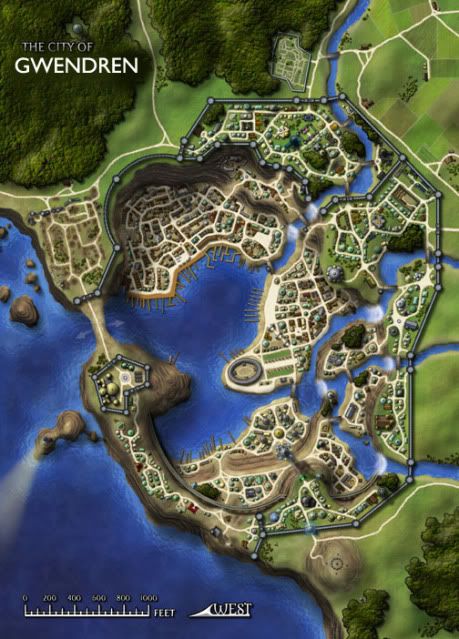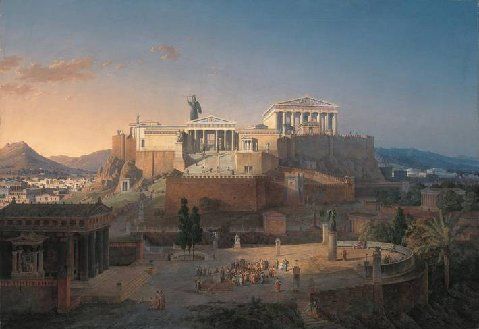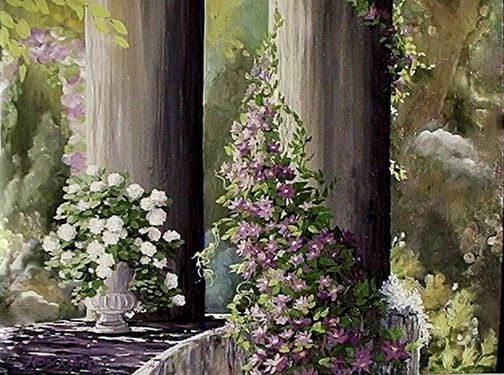Post by Head Moderator on Jan 28, 2012 4:27:11 GMT -5

ABOUT THE LAND
Three different groups came together to form the Covenant of Zyon. An official known as the Zupa is elected every 7 years, and the three Zupa of Zyon lead the land as a group. There are nobles within the land, but the Zupa can be elected from any rank of person within the zupan - even peasants or fishermen, male or female. Once a boy of 10 years of age was elected. The elections are held on different years, so that there is never three brand new Zupa at one time.
Families in Zyon are small. Unless you are of the noble lines, few bother to keep track of family beyond immediate relatives. When a man marries he becomes head of his household, and his wife becomes "mistress of the house." They have equal legal rights and joint ownership of property within the marriage; after death, the wife can expect the same eternal life as her husband and an equal share in his tomb. When a couple dies, their property is divided between their children in their will. The financial position of women and children is protected by law, and even after marriage women retain ownership of their own property. If a woman's husband divorces her, she keeps her own property and he has to pay her compensation. If a wife can not bear children a female slave is sometimes brought to the household. If she then produces children they could be given full legal rights of inheritance when the father died.
Zyonites love riddles, jokes, sarcasm, and wordplay. They generally prefer a relaxed and patient life, characterized by the phrase “Don't worry”. They often identify with community groups to the point that personal needs become secondary to those of the group. Generosity is an integral part of this sense of community. They are expressive, emotional, and are known for their sense of humor, which has helped them endure difficult living conditions with great composure. Festivals in Zyon follow a lunar calender and are most often celebrations of the dead.
They raise cattle, sheep, pigs, and goats, and grow wheat, barley, vetch, and chickpeas, they also cultivate grapes, figs, and olives, and grow poppies, for poppyseed and opium. They domesticate bees, and grow pomegranates and quinces. They build their homes of the local white marble, or if they cannot afford that, they paint their outside walls white whether stone or wood.
"You are as many a person as languages you know." - Zyon Saying
Zupan of Emeraldesse

GWENDREN
SUMMERGLASS
The town of Summerglass and it's harbor are very old. Summerglass lies on a rocky harbor and is one of the richest of the towns within Zyon with several gold mines as well as plenty of copper and tin. They are primarily a mercantile people engaged in overseas trade. The men wear loincloths and kilts. Women wear robes that are open to the navel, leaving their breasts exposed, as well as short sleeves and layered flounced skirts. Women also have the option of wearing a strapless fitted bodice. The patterns on clothes emphasizes symmetrical geometric designs, and are normally silk even in the poorer families.
Summerglass Silk is made here. Summerglass IS Silk. From the worms to the weaving, it all goes on here. Wild silk is grown in a well-protected forest under natural conditions. To walk under the mulberries while the worms are feasting sounds like heavy falling rain. In this silk producing area it is the job of the grandmothers, mothers and daughters to tend to the worms, while the men guard the areas where the worms live and breed.
Summerglass silk can be dyed various colors, but the raw silk comes in natural shades of white (normally used for dying), pale yellow shades to a golden yellow shade (usually left raw, bu can be dyed), soft and pale rose pink (used for Palesilk) and the rarest is the silvery-grey (used for Greysilk)
There are only six types of silk in the lands, three of which come from Zyon: Summerglass Silk (normally dyed), Palesilk (Never dyed, naturally pale rose), Greysilk (Never dyed, naturally silver-grey) and Black Silk (naturally black). [See Kir'viir for Spidersilk, from spiders, and Seasilk from mollusks].
Greysilk - Rare and expensive, this lightweight silk is extremely "silky" and can be considered a chiffon. It is silvery-grey, and has a smooth and soft texture. Often Greysilk and Sadira silk are used to create lovely gowns and clothing for the nobility who cannot afford an outfit solely made of Greysilk. The Queen of Sarkotos was married in a wedding dress solely made of Greysilk, it is one of the treasures of the kingdom as it cost a fortune to make! One yard of greysilk usually goes for 25-40 gold a yard, depending on availability.
Palesilk - Fairly rare, and moderately expensive, this silk has a smooth texture, it is extremely soft and has a luster to it. It falls easily and fluidly much like a georgette type fabric. It is never dyed, and the pale rose color is used by male and female alike in clothing, and it is especially prized for underthings. Palesilk usually goes for 15-20 gold a yard.
Summerglass Silk - The most common silk around. The matte surface and "pebbled" texture of this graceful fabric reflect individual pinpoints of light, giving it wonderful chromatic depth and striking eye-appeal. This luxurious silk has the additional virtues of great durability and excellent wrinkle resistance. It is thicker than Greysilk, soft, and can be dyed a multitude of colors. Used for formal gowns, wedding gowns, noble and royal outfits usually. It can also be used to make jacquard which is used in home furnishings such as pillows, sheets and throws. Summerglass silk usually goes between 8-12 gold a yard, depending on the type of dye and access to the silk. Black dyed summerglass silk goes for 10-12 gold a yard.
Black Summerglass Silk - This silk is woven thicker and has much more texture than any of the other silk. It is sometimes referred to as spunsilk or blacksilk, and is dyed a lustrous black. It makes warm and absorbent clothing, which makes it perfect for outwear. It is the most expensive Silk and can be used in applications with other fabrics.
Wormwood
Wormwood is the ever so creative name given to the tract of forest where the silkworms live their lives, and produce the cocoons that make silk. It is heavily guarded in shifts by the Silk Guardians, the able-bodied men of the village.
"A light is still a light even if the blind man can't see it." - Zyon Saying
Valley of the Damned Lovers
How it happened no one is sure, it happened decades, perhaps centuries ago. A pair of magic users of widely different faiths and creeds fell in love with each other. They eventually turned from love to war with each other. The wizard was slain, but maintained a terminal existence as a sentient zombie, perpetually decomposing and falling apart. The witch was driven completely mad and into a spectral half existence. The two still circle each other, alternating between flirting romance and horrific exchanges of magic. The main thing they use in their conflicts are waves of conventional zombies, of which both have a constant need for more bodies. Both have sent scouts and bodysnatchers beyond the valley in the Clumps near Summerglass to steal fresh corpses, the sick and infirm, and anyone foolish enough to get caught by the zombie scouts.
EMERALDESSE
The port city of Emeraldesse is a city of peaceful intentions. All not bearing the badge of the Zyon Knights are forbidden to carry weapons. Outsiders traveling through the city must have their weapons peace-tied and sealed, and a record made of their passing. A broken seal on a weapon is sufficient cause for arrest. The Knights also patrol the outlying farms. Smugglers are executed, from captain to lowest deckhand. Most of the taxes they collect from the city is used to build roads, and there are now public fountains with running water in most areas of the city. Both disease and crime have dropped considerably since the covenant formed.
THE CLUMPS
XENTHADRIMNON
Carved out deep beneath one of The Clumps, Xenthadrimnon was once a great mining kingdom known for precious metals and gemstones. Since the fall of Xenthadrimnon thousands of years ago, the city's ruins have remained mostly undisturbed due to the presence of guardian golems. It is a mind-boggling maze of a city, containing many cleverly built traps. Collapsing ceilings, explosive devices, and other cruel contraptions await those that explore these ruins.

MINOWA
[All buildings here are stone, a native white marble, that is quarried not far from the city. The curved circular city wall of Minowa takes best advantage of the stones appearance. The stone has a luster and partial opalescence that makes viewing the city at sunrises and sets (and to a lesser extend moon rises and sets) a spectacular view. Said stone is slick and resistant to things sticking to it (so dirt and dust slides off it), hence the “A” groove in building stones, allowing them to lock tight with no mortar.
Most buildings here use the stone for their thick walls. Their roofs are normally flat, as the warm nights and beautiful make spending time on the roof a comfortable option. The buildings of the lower class, use reeds (and reed mats) over cross beams as roofs. These roofs are accessed by ladders. Buildings of the second and third tier of citizens have one to two story buildings with solid wood roofs. Rooflines use the local blue clay to make deep blue tiles for the top roofs to mimic their betters. The fourth and fifth tier citizens have buildings made entirely of stone, with balconies, domes, and flat roofs made of stone, adorned with blue clay tiles. Local law prevents people from having homes taller than those of a superior tier, so the more noble the citizen, the taller their home… even if it is only with a spire.
All but the poorest homes and buildings have attached walls which create a patio or atrium. The lush plant growth from the hot, but not too hot, temperatures here, allows a family to create a beautiful retreat as well as grow decorative fruiting plants. Some families have ponds with fish in these areas. Those fish are both decorative and edible, allowing for the freshest food possible.
The blue tiles are made from the local clay. It is a brownish grey before firing, but after firing it turns a deep blue. Though used for roofs, the tiles normally find their way into houses on the floor. The floors of all public buildings and most home are made of blue tiles and small tile sized bits of the white stone. Most are arranged in a beautiful geometric pattern, but others use various colors to express pictures through the floor. While rugs are used, many people can not bare to cover up the works of art on their floor.
Given the Minowan ideal of beauty has to deal with symmetry and simplicity, the furnishings are fairly minimal. While the furniture can be artistically pleasing, there is normally less of it that one would expect given the wealth of Minowa.
There are no glass windows here. Walls are thick and high ceilings help keep homes cool. The occasional storm is normally brief and usually warm anyways. The humidity of Minowa allows for lush plant growth. This combined with the Minowan love of beauty and sensory treats means plants are tucked in any number of places… high window boxes, wall sconces, open nooks in walls.
The wide roads here are made from hexagonal blue tiles. The slight gaps in the tile allow water to drain slowly though them. They are often lined with lush plants and flowers. There are no sidewalks here, so pedestrians share the roadways with the occasional cart or rider. Given the generous size of the roads here, there is little conflict.
Since much of the city is two stories tall, some of the public areas have sidewalks of sorts at that second level. These wooden sidewalks (board walks in the local parlance) provide some shade to those on the road below. Beautiful arched bridges connect these walkways over the roadways below.
The city is beautiful by night as well. Hundreds of lamps are lit in the city, every night by young boys trained to the task, lighting every intersection and notable building. Add to this the light spilling from window, and the city glows well into the night.
[Idea from Strolen's Citadel]
Zupan of Swerdscree
SWERDSCREE
Tomb of the Forgotten Sorcerer
A vain and jealous sorcerer who lived centuries ago laid out the plans for his elaborate tomb in the foothills of the Bristleback Mountains near Swerdscree. The tomb was to remain an inviolate fortress for both his magical research and corpse. The tomb itself was looted fairly quickly after it was completed and its occupant placed inside. But the rage of the sorcerers ghost remained. The Ghost stalks often miles away from the tomb, looking for the people that robbed it, and violated its final resting place. The Ghost still uses some magics, such as casting illusions to distract and divide groups of people, fear magics to cause horses and servants/minions to flee, and it has both a normal life draining ghost attack as well as a specific attack that causes petrification. The land around the tomb can be noticed by the number of stone statues of people with their faces frozen in terror.
CHERRY SANDS
The Butterfly Grave
Near Cherry Sands, on a knoll within the Cherry Sands Kirk is a stone marker in the ancient style, carved to resemble a vague human figure, with the face carved to exacting detail, representing the buried invidividual. A mask of gold is bolted upon the face; it has not been stolen because of the Grave's supernatural reputation.
The Butterfly Grave is thought to be haunted by a hungry ghost. Every night at the midnight hour, glowing butterflies begin to emerge from the feet of the stone marker. These butterflies spawn by the hundreds, until there is a great glowing cloud of butterflies that flutter about the area, settling upon the golden mask, upon the hill and the grass, upon other crypts and stones around the grave, and the nearby tree.
Nobody is sure why. Most speak of ancient magic, or of a ghost in the shape of the butterflies, or Demons waiting to snatch up passers-by. Most of the stories take a gruesome character.
"A book is a garden carried in the pocket." - Zyon Saying

Zupan of Peristyle Park
DEEPFOG
FARTHINGHELM
Farthinghelm is a poor community, with many on the outskirts living in lean-tos and thatch huts, or homes on stilts. Its greenhouses hold the cultivated tropical flowers for which the city is known. The coastal waters are rather shallow, allowing only small vessels to dock.
"No hill without gravestones, no valley without shadows." - Zyon Saying












